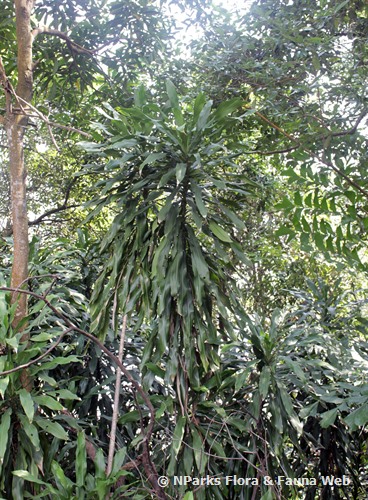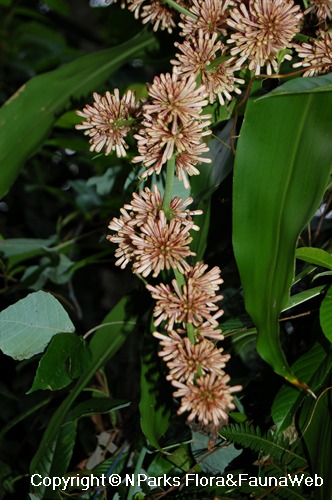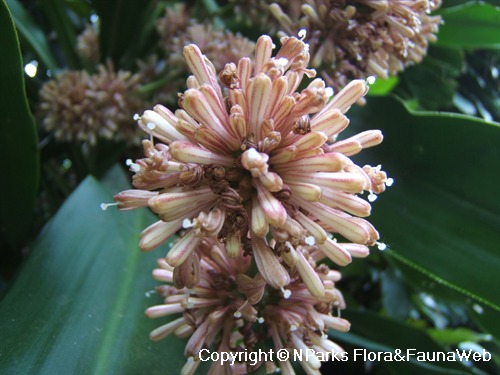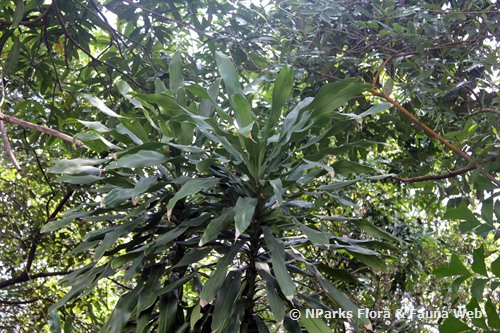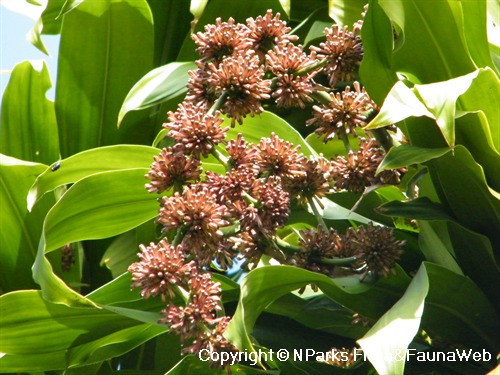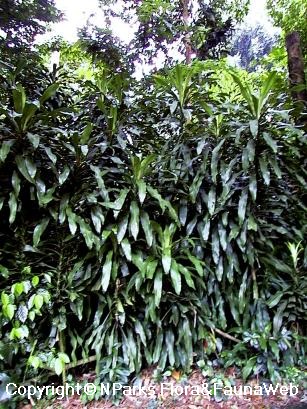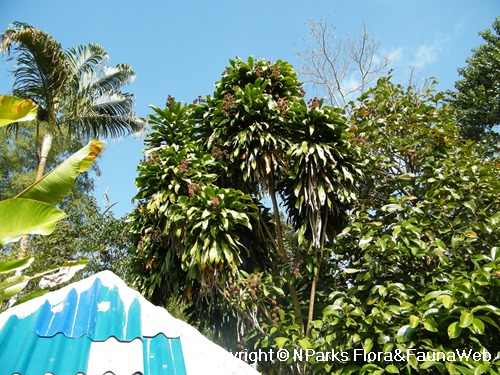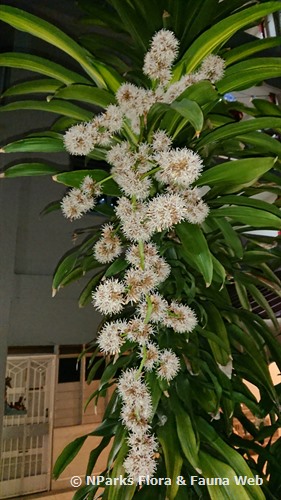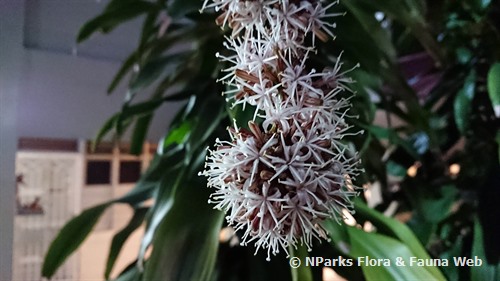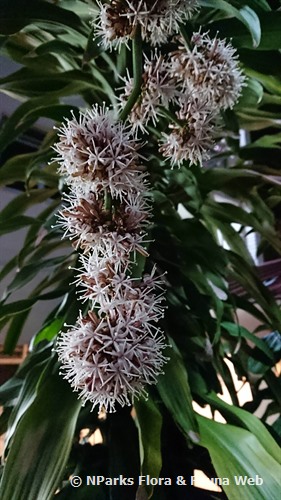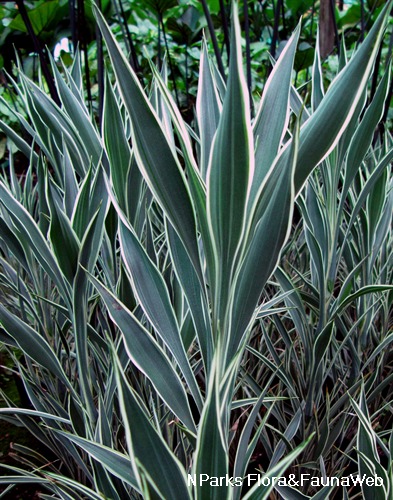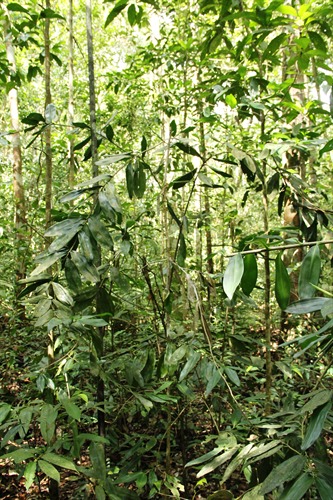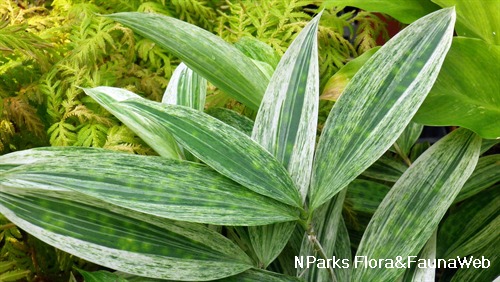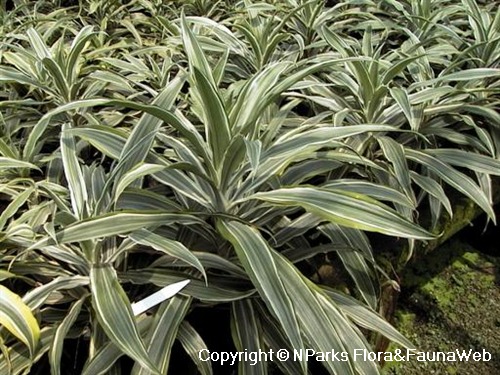
Back
Dracaena fragrans
| Family Name: | Asparagaceae |
| Synonyms: | Agave fragrans |
| Common Name: | Corn Palm, Palmillo, Fortune Plant, Corn Plant, Senjuang Wangi, Dragon Plant, Iron Plant |
Name
Classifications and Characteristics
| Plant Division | Angiosperms (Flowering Seed Plants) (Monocotyledon) |
|---|---|
| Plant Growth Form | Shrub, Tree (Small (6m-15m)) |
| Maximum Height | 10 m |
Biogeography
| Native Distribution | West Africa |
|---|
Description and Ethnobotany
| Foliage | Leaves are arranged in a spirally, forming a rosette atop a woody stem or cane, which bears the leaf scars of shed foliage, similar to a palm. They are smooth, glossy, deep green, lanceolate with an acute apex, up to about 70cm long. The smaller, younger leaves are erect and spreading, while the older leaves (at the bottom of the rosette) tend to droop under their own weight. |
|---|---|
| Flowers | Inflorescence is a downward hanging panicle about 50 to 150cm long, growing from the apical tip. Individual flowers are small, about 2.5cm long, with a 6-lobed fused corolla, and heavily fragrant. They are initially pink, the gradually white with a thin pink or purple line along the middle of the lobes. |
| Fruit | The fruit is a small (1 - 2cm diameter) reddish-orange berry. |
| Others - Plant Morphology | A relatively slow-growing monocot which grows into a multi-stemmed woody shrub up to 10m tall. Also a very common indoor plant, valued for its tolerance of a wide range of environments, from full sun to full shade. Propagation:Most commonly propagated from wood cuttings. 10 - 30cm lengths of woody canes can be cut off and planted in a sandy substrate. However, plants grown from such cuttings will only have side shoots and not a central growing stem. |
| Cultivation | A very common houseplant, and found by NASA to be one of highly effective indoor pollutant reducing species. It is also sometimes grown in gardens as an accent plant.Outdoors, it is generally an understorey plant and therefore prefers partial shade, but may eventually grow tall enough to become exposed. The site should be well-drained, with neutral to slightly acidic (pH 6.5) soil.Indoors, it prefers a bright position but can be acclimated to fairly low light conditions (away from windows - under only ambient artificial light). Care must be taken not to overwater indoor plants as they become very susceptible to root rot if the media is constantly damp. It is beneficial to allow the soil to be slightly dry with thorough watering given only when the soil is very dry, especially if placed in very low light conditions.Indoor specimens rarely flower unless fairly old (at least 6 years) and completely acclimated to their environments. After flowering, the original apical shoot stops growing and dies off, while new branches emerge from the cane. |
Landscaping Features
| Desirable Plant Features | Ornamental Foliage |
|---|---|
| Landscape Uses | Interiorscape/ Indoor Plant |
Fauna, Pollination and Dispersal
| Fauna Pollination Dispersal Associated Fauna | Bee-Attracting |
|---|
Plant Care and Propagation
| Light Preference | Semi-Shade, Full Sun |
|---|---|
| Water Preference | Moderate Water |
Foliar
| Mature Foliage Colour(s) | Green |
|---|---|
| Leaf Area Index (LAI) for Green Plot Ratio | 3.5 (Shrub & Groundcover - Monocot) |
Image Repository
Others
| Master ID | 658 |
|---|---|
| Species ID | 1953 |
| Flora Disclaimer | The information in this website has been compiled from reliable sources, such as reference works on medicinal plants. It is not a substitute for medical advice or treatment and NParks does not purport to provide any medical advice. Readers should always consult his/her physician before using or consuming a plant for medicinal purposes. |

